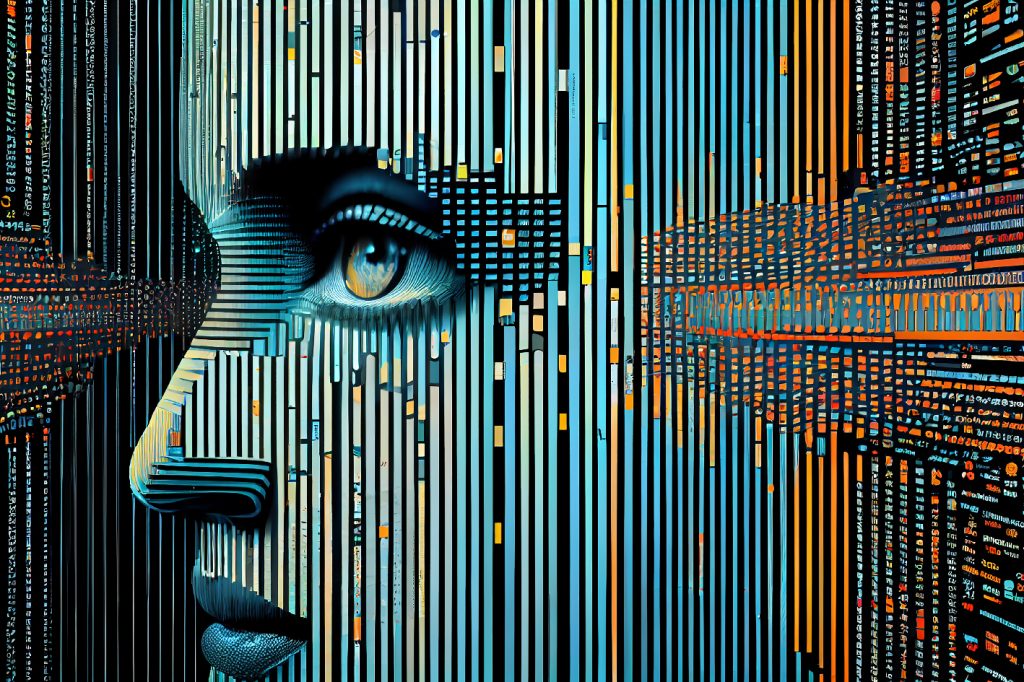
Everyone today is familiar with ChatGPT, DALL-E, LaMDA, Google Bard, Bing AI, etc. We use these large language models to generate text, images, and other creative content.
Do you know what exactly these are?
These are only a few of the numerous applications for Generative AI in use today.
In recent years, artificial intelligence has made incredible advances, and one of its most exciting applications is generative AI. The term “Generative AI” describes the capacity of machines to produce original and valuable information, opening up new creativity and innovation. We explore the possibilities, uses, and effects of generative AI in many industries in this blog as we delve into the fascinating realm of this technology.
The Rise of Generative AI
“Generative AI” is capable of producing original content, including text, audio, graphics, and more. It achieves this by identifying patterns in existing data and using this knowledge to produce new and unique outputs. The ability of generative AI to produce highly realistic content makes it a useful tool in a variety of industries. Generative AI is a broad term that refers to any sort of artificial intelligence that can be used to generate new text, images, video, audio, code, or synthetic data.
The world has been completely taken up by generative AI. It revolutionizing the way we communicate, work, and innovate. It is already influencing the future in many areas, even at this early level, and its impact on our lives will only continue to grow. Embracing this powerful tech will open doors to unimaginable possibilities, Let’s dive deep into some applications:
Applications of Generative AI
Text Generation:
There are several uses for text generation in the fields of chatbots, content development, natural language processing, etc. The technology facilitates the creation of writing utilized for marketing copy, blog posts, news pieces, poems, code, scripts, musical compositions, emails, letters, and other creative text formats.
OpenAI’s ChatGPT platform uses text Generation to produce responses in chat conversations. With over 100 million users, illustrates the quick uptake and broad application of this cutting-edge technology.
Image Generation:
Generative AI for image processing is a powerful tool that has the potential to revolutionize the way we interact with images. This technology includes image creation, editing, restoration, and augmentation. In the case of image creation, create visuals like cartoons, drawings, and pictures. It can also be used to create images of people, places, and other items included in the category of images. We can also use generative AI models to edit existing images. This can be used to remove unwanted objects from images, change the background of an image, or even create new facial expressions for people in images.
Image restoration: Generative AI models can restore damaged images, making them useful for restoring lost or damaged photos and enhancing the quality of low-resolution pictures.
Augmentation: Generative AI models can enhance existing image collection, either by expanding a dataset or by providing novel versions of images that pose challenges for computer vision algorithms to classify.
Audio Generation:
By generating audio, it helps to create audio that can be used to create noise, such as voices, music, and sound effects. Using this technology, it is also possible to develop realistic voices for humans and fictional characters as well. These models train on a large dataset of existing audio, learning to identify the patterns and features that constitute that audio. Once trained, they have the ability to generate new audio resembling the ones on which they received training.
Generative AI models can create new music, including melodies, beats, and songs, for various purposes such as personal entertainment, video games, or movies. Also used to create speech synthesis. Once trained, they have the ability to generate new audio resembling the ones on which they received training.
This can be used to produce audio novels, other spoken content, and lifelike chatbot voices. The capability can be utilized for producing audio novels, and other spoken contents. It produces sound effects like gunshots, explosions, and footsteps. This can be used for a multitude of things, like producing sound effects for independent projects or special effects for video games or movies.
Video Generation:
Furthermore, we can able to create videos, such as those for TV shows, movies, and advertisements. Realistic videos of people, places, etc are an application of video generation.
The augmentation of data is the process where more data points are adding to existing data sets. In addition to improving predictive accuracy, this can also help with training machine learning models to be more accurate.
Create fictitious data that resembles real-world information. For performing research and testing software applications, this is helpful.
These are some of the applications of Generative AI in the advanced world.
Final Conclusion
A cutting-edge technology called generative AI has the power to completely alter the ways in which humans produce content, learn, and engage with the environment. Even though it is still in its early phases of development, people are already utilizing it for various purposes.
We expect many more ground-breaking and creative applications of generative AI as it develops. It has the power to alter the way we eat, sleep, and play and everything we do in our life. Remaining vigilant about generative AI’s potential dangers, such as propagating discriminatory ideas and misinformation, is crucial. Generative AI can, nevertheless, be a force for good in the world with careful development and application.